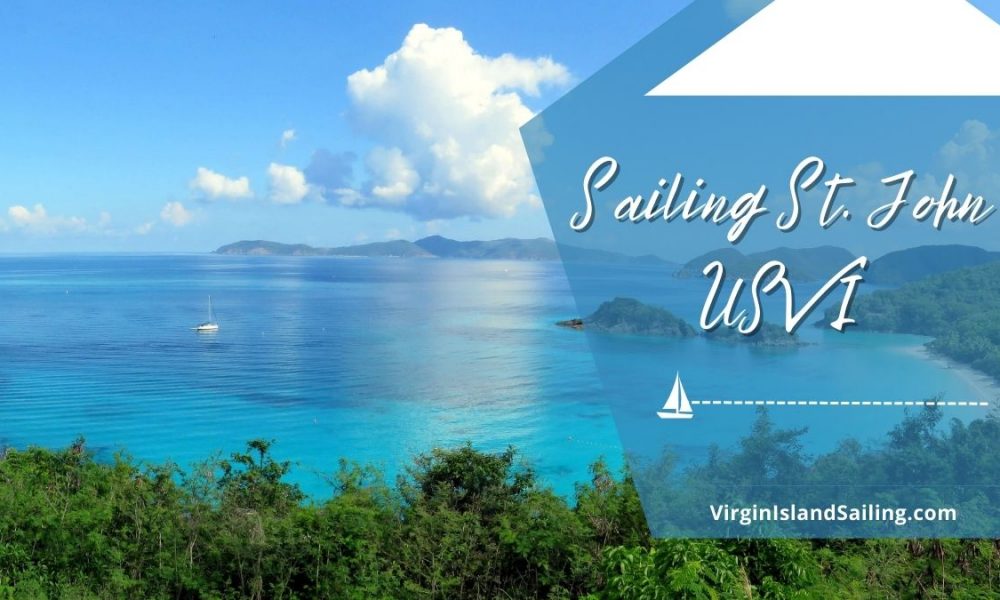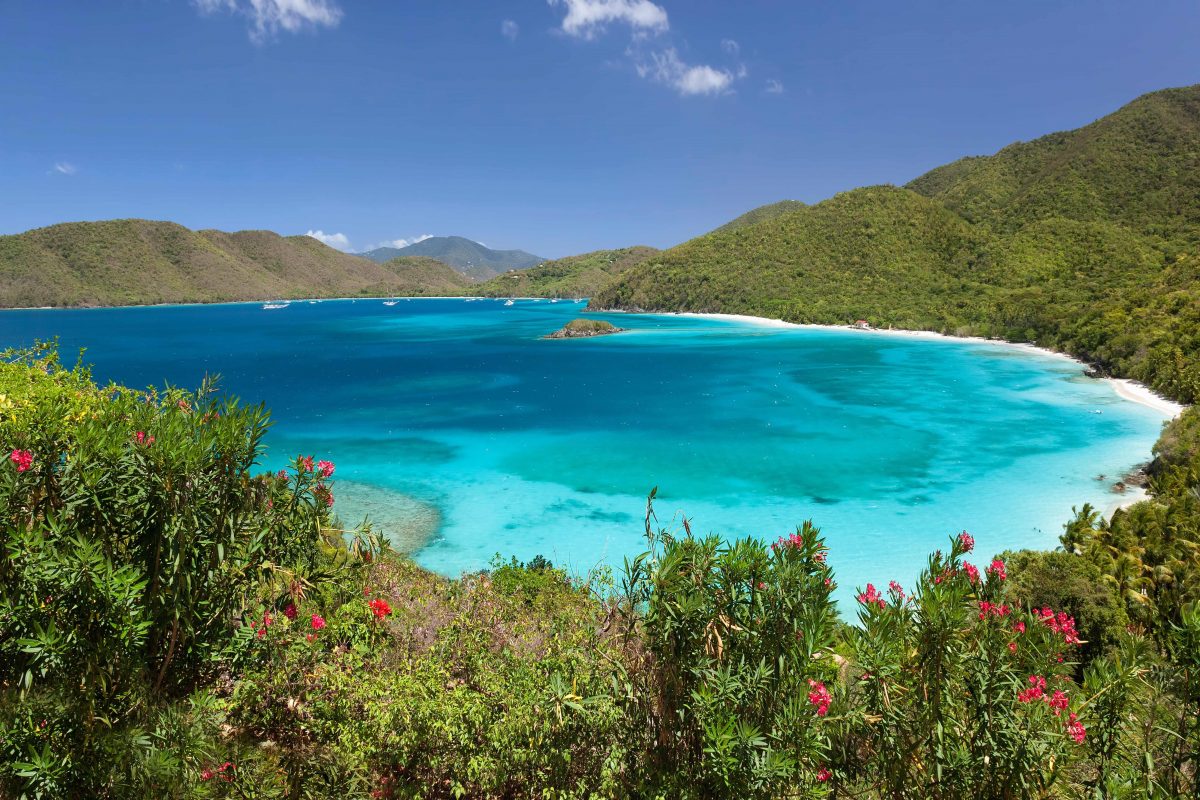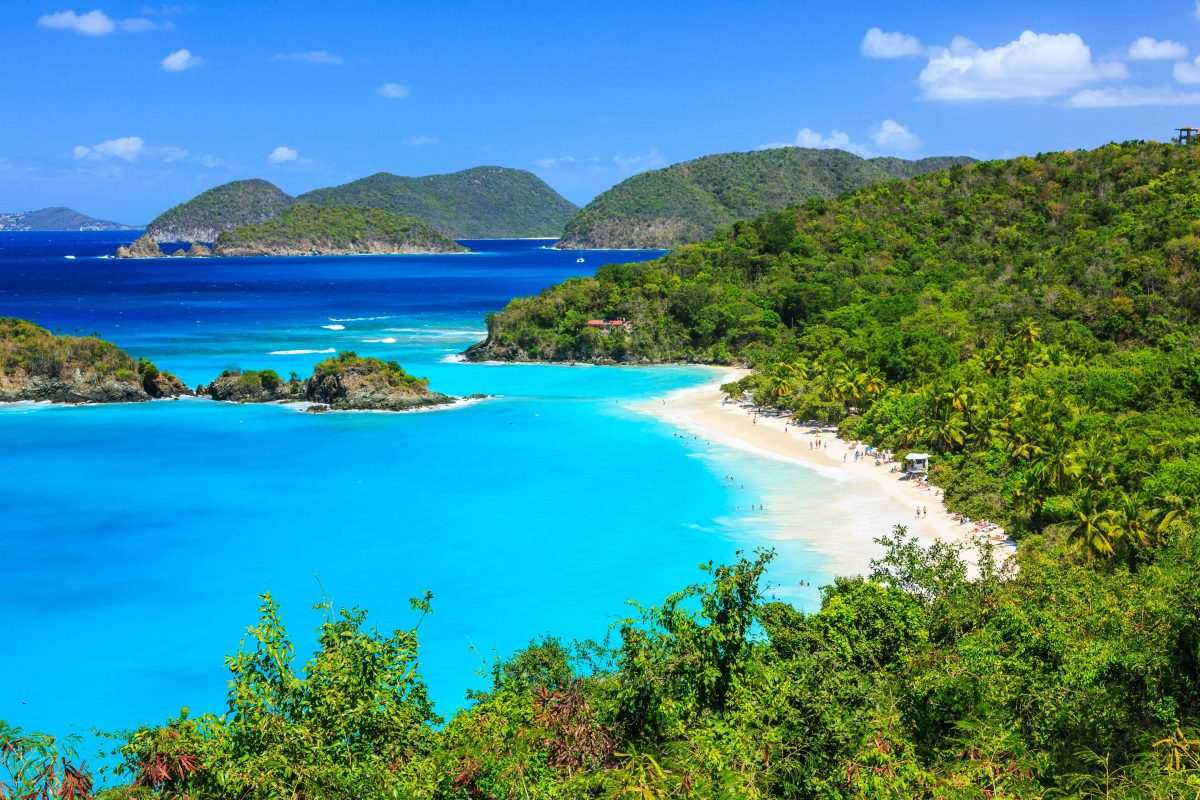
Sailing St. John USVI is a truly remarkable experience that combines the thrill of adventure with the beauty of an unforgettable Caribbean paradise. With its rich history, vibrant culture and stunning natural wonders, St. John has something for everyone to enjoy.
Whether you’re a seasoned sailor or just taking your first trip to this beautiful part of America’s Virgin Islands, we invite you to go along on our journey through this incredible destination – from its breathtaking beaches and lush forests to its historic sites and lively towns – so you can make the most out of your visit!
A Brief History
The first settlers on St. John were most likely the Amerindians, who migrated north by canoe from South America, making the island their new home. An archeological dig at Cinnamon Bay has unearthed artifacts dating to 710 B.C.
During his second voyage in 1493, the Virgin Islands were named by Columbus to honor the beauty of St. Ursula and her army of 11,000 martyred virgins. Passing through a succession of owners, including Spain, England, France and Holland, the Danes eventually took control of St. Thomas in 1666 and then expanded to St. John in 1718 and St. Croix in 1733.
No permanent European settlement was founded on St. John until the 1720’s, when the Danes were lured by the prosperity that came from sugar cane cultivation. A thriving economy evolved, based on sugar (molasses and rum), slave labor and commerce.

A bloody slave revolt on St. John in 1733 followed by a bloodless rebellion on St. Croix in 1848 brought about the abolition of slavery in the islands, thus ending the era of the sugar plantation and the wealth that was based on slave labor. St. John’s population soon dropped to less than 1,000 people.
The Danish continued to rule the 3 islands until World War I, when the U.S. purchased the islands in 1917 for $25,000,000 (approximately $300 per acre) as protection for the Panama Canal.
During the early 1950’s, Laurence S. Rockefeller bought up most of the island of St. John. In 1956, he and his family, owners of the luxurious Caneel Bay Plantation Resort, donated what amounts to two-thirds of the island (9,500 acres) to the American people.
Congress established the Virgin Islands National Park to preserve the natural and cultural resources on St. John. In 1962, 5,650 additional acres of surrounding water was included within the park boundaries.
In 2001, a presidential proclamation created the Virgin Islands Coral Reef National Monument, which added an additional 12,708 acres of submerged land to the National Park Service.

Park Service Regulations
Since most of St. John is protected by the park system, there are some regulations that must be followed to preserve this beautiful biosphere.
First, any beach in the USVI can be used by anyone. You cannot, however, gain access to a beach by crossing private property or go beyond a beach into private land. Therefore, some beaches on St. John are only accessible by sea.
Second, in order to prevent anchor damage to sea grass beds and coral reefs, the park has established anchor zones as well as installed moorings on both the north and south shore of St. John.
Cruz Bay
The main town of Cruz Bay is more like a busy little village. It became a port in the mid 1800’s when Danish soldiers used it as an outpost from St. Thomas. It is a great place to pass the time limin’, eating, drinking and enjoying duty-free shopping, especially at the Mongoose Junction, a charming outdoor arcade, or the Wharfside Village with everything from t-shirts to fine jewelry as well as a working spice factory.
Because people tend to come to St. John to hideaway, the island boasts an active artistic community that includes writers, painters, and musicians. St. John Saturday is held the last Saturday of each month and is a wonderful opportunity to experience island crafts, music, culture and food.
St. John has many restaurants that offer a variety of cuisine that reflects its history and blend of cultures. You will find Mexican food, BBQ, Chinese, Italian, Continental cuisine, fresh seafood, and of course, local fare such as Pate’ – a sweet bread filled with a variety of fillings including fish, lobster, chicken and conch.

Two local favorite dining spots in Cruz bay are Uncle Joe’s BBQ and the Fish Trap. Uncle Joe’s BBQ is located not far from the ferry landing, and consists of an outdoor grill and picnic tables. You must come early, because it is the best BBQ on the island and the food does run out.
A short distance from the ferry dock in Raintree Court, you will find another favorite, The Fish Trap. Offering casual dining either outside on a covered porch or inside in the air-conditioned bar, there are always at least 6 types of fresh fish on the menu daily. Save room for their coconut cake with rum caramel sauce!
Next store is the Fish Trap Seafood Market where those on USVI yacht charter can provision with the freshest fish available, as well as wine and condiments to go.

Be sure to stop at the National Park Service Visitor’s Center next to the Caneel Bay Shipyard across from the customs office. Here you will find maps of the park, free literature, exhibits, and a monthly schedule of ranger-led activities including adventure hikes, snorkeling trips and history programs, as well as information for self-guided walks and tours.
Hiking in the Virgin Islands National Park
Crisscrossing the park are approximately 22 well-marked hiking trails, many of which start from the North Shore Road.
For the nature lover, St. John’s wilderness is a delight. There are 800 varieties of plants (many of which have medicinal uses), 160 species of birds (including hummingbirds), iguanas, wild cats and burros (they bite-so be careful).
The three most popular hikes are the Reef Bay Trail, the Wade and Walk Tour, and the Annaberg Sugar Mill Tour.

The ranger-guided 3 mile Reef Bay Trail is an adventurous hike through the rainforest, where you will see a sugar mill ruin and ancient petroglyphs (prehistoric stone pictures) before taking a boat ride back to Cruz Bay.
The guided Wade and Walk Seashore Tour inspects creatures which inhabit tidal zones.
From Leinster Bay, you can take a 30 minute self-guided walking tour of the sprawling Annaberg Plantation – an 18th century sugar mill. You will find the remains of old slave quarters and villages. The mortar between the stones is made of flour, molasses and sea shells.
Throughout St John, you will come across several lookout points that provide stunning views and gorgeous scenery. You do not have to hike to see these views. You can enjoy the scenic drives by hiring a taxi and taking an island tour, or rent a car and take a self-guided driving tour.

The North Shore Road
Outside of Cruz Bay, the North Shore Road follows the lush coastline leading past some of St. John’s most beautiful white sand beaches and turquoise blue bays with tranquil waters.
Other than Trunk Bay, which charges admission, all the other beaches are free. Some offer dressing facilities, restrooms, beach bars and other amenities, while others are quite secluded and remote.
If using these bays as an anchorage during your yacht charter in the USVI, remember to be aware of the specific park service regulations for each area. You can find them by consulting your cruising guide.
Caneel Bay
The rich and famous enjoy this beach that is part of the luxury ecoresort beach club created by Rockefeller in 1956. Although mooring is permitted, the resort requests that those on a catamaran charter keep the noise level down and that no laundry is hanging on the lifelines.

Hawksnest Bay
This beach is popular with the locals because it offers some privacy as tourists usually do not come here. It is peaceful and relaxing, and a great place for picnics or a swim. It is also a choice spot to spend some time snorkeling because the nearby reef is teeming with marine life.
Trunk Bay
This is one of the most spectacular beaches in the Virgin Islands, but it is often the most crowded. There is an admission charge to use this beach.
Snorkelers can explore the Underwater Trail marked by red, white and blue buoys. Underwater plaques help identify the coral and fish you see. Some would consider the trail somewhat touristy and frankly, there are better places to snorkel and relax.

Cinnamon Bay and Maho Bay
A popular campground is run by the National Park Service at Cinnamon Bay with plenty of outdoor activities. Canvas tents on the beach let campers get back to basics.
You can partake in watersports, rent beach chairs, snorkel equipment, kayaks and bicycles, and even take a windsurfing lesson. In the winter, this is the best place for surfers to catch a northern swell.
Maho Bay offers deluxe camping with all the modern conveniences. They welcome those on a USVI catamaran charter with showers, a well-stocked store and a restaurant that offers breakfast and dinner.

Francis Bay
The water in this bay is crystal clear. The view of the nearby British Virgin Islands is magnificent. Ashore, you will find garbage facilities maintained by the National Park Service for your use.
If you feel like a walk, follow the trail to an abandoned plantation house, or follow the road to the Leinster Bay Trail to see the Annaberg Sugar Mill Ruins.
Leinster Bay
This beautiful and well-protected bay lies directly south of the western tip of Little Thatch Island, BVI. It is a great place to snorkel and it is likely you will encounter sea turtles, rays, eels, deep orange star fish and a variety of colorful reef fish.
Simply secure your dinghy up on the sandy beach and then, following the shore line, snorkel out to Watermelon Cay and back. In the southwest corner of the Bay, there is the well-marked trail that leads to the restored ruins of the Annaberg Sugar Mill.

The Rest of the Island
Coral Bay, located on the eastern end of the island, is St. John’s second town. There is no customs service here. It is not a tourist destination, and thus caters more to locals and long-term cruisers.
It is the site of the first Danish colony and is home to the 1733 Emmaus Moravian Church – the oldest church on St. John. You can also see ruins of an old fort, sugar mill and a number of buildings from slavery days.

Today, it has become the place to eat on St. John with a number of interesting restaurants and bars. Check out Skinny Legs. The parking lot is full of island dogs scratching their fleas and rusted-out old clunkers. The shack-like bar is decorated with broken windsurfing boards, old flip flops and mobiles made of well-worn beach sandals. Serving sandwiches and burgers, it is a popular drinking spot.
On the south coast of St. John, there are several other bays less visited by sailors, as well as locals, because the beaches tend to be out-of-the-way. If you are on a boat charter, no anchoring is permitted by the National Park Service; however, you can pick up moorings maintained by the park service.
Salt Pond Bay has a rocky beach that is not good for lounging, but is great for exploring, especially the tide pools. Snorkeling around the anchorage is excellent. Another bay that also offers superb snorkeling is Little Lameshur Bay.

Other Fun Activities While Sailing St. John USVI
In addition to beach hopping and hiking through the National Park, St. John offers other fun experiences for the outdoor enthusiast. There are no golf courses on St. John, but you can play miniature golf. Some of the resorts have tennis courts that can be used by non-guests for a fee, but there are public courts in Cruz Bay.
Although limited, both half and full day mountain bike tours are available. You can go horseback or donkey riding. Imagine a sunset or even a full moon ride. Trail rides on St. John are usually 2-3 hours and can be arranged for in Coral Bay.

Whale watching is popular, particularly around February and March. Humpback whales migrate from the North Atlantic between December and March and can sometimes be seen around VI waters.
Sport Fishing is huge in the USVI. Some 21 world records have been set in recent years in the Virgin Islands. The hot spot for billfish – blue marlin, white marlin, and sailfish – is the world famous North Drop which is easily accessible from St. John. During the winter months, dolphin, wahoo and tuna fishing provide anglers with an amazing experience.
Join an offshore fishing charter and try your luck or enjoy a few hours closer inshore fishing for mackerel, bonefish, snook, kingfish, amberjack, grouper and snapper, which bite year round.
Finally, PADI excursions are available for certified divers to explore shipwrecks, underwater caves and large reefs. Like most of the snorkel/dive sites in the Virgin Islands, expect to see magnificent corals and sponges, forests of sea fans and colorful reef fish such as blue tangs and parrot fish, sea turtles and much more.
Three sites that are also frequently visited when sailing St. John, USVI are:
Major General Rogers: A 120 foot Coast Guard vessel that was intentionally sunk off of St. Thomas in 1972. It rests at 40-60 feet.
Eagle Shoals: Off Coral Bay, this seldom-visited site, due to its remote location, offers curious caves and exciting swim-throughs.
Carval Rock: Due to currents, this is an advanced dive site. See dramatic rock formations loaded with corals and sponges from 20-80 feet.

If you are a night owl and still have some energy left to burn, there are no theaters, casinos or dance clubs on St. John, but there are plenty of great bars to party until the wee hours of the morning. Make sure to visit Duffy’s Love Shack in Cruz Bay. At this fun nightspot, you will drink potent drinks with names like Jaws or Baracuda Bomber while you dance under a thatched roof.
If you’re looking to explore the Caribbean and its stunning natural beauty, then sailing St. John USVI is a must-do experience! The views are breathtaking, the waters turquoise blue, and the towns so charming – there’s something for everyone here. Don’t wait any longer – Contact one of our Charter Experts and start planning your bareboat or all-inclusive sailing adventure today and come see this Caribbean paradise for yourself!




